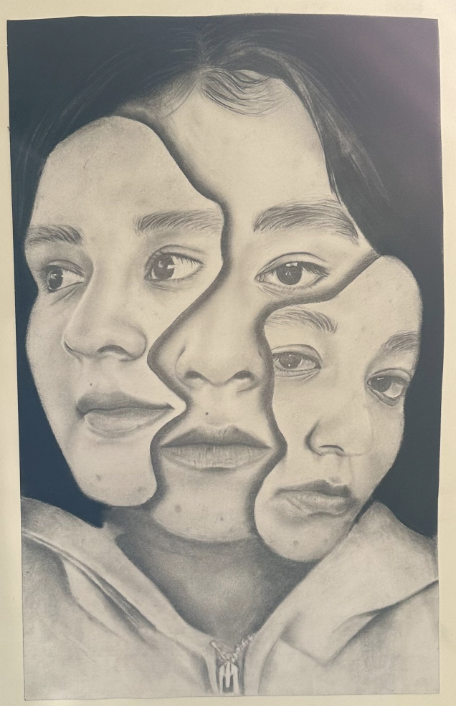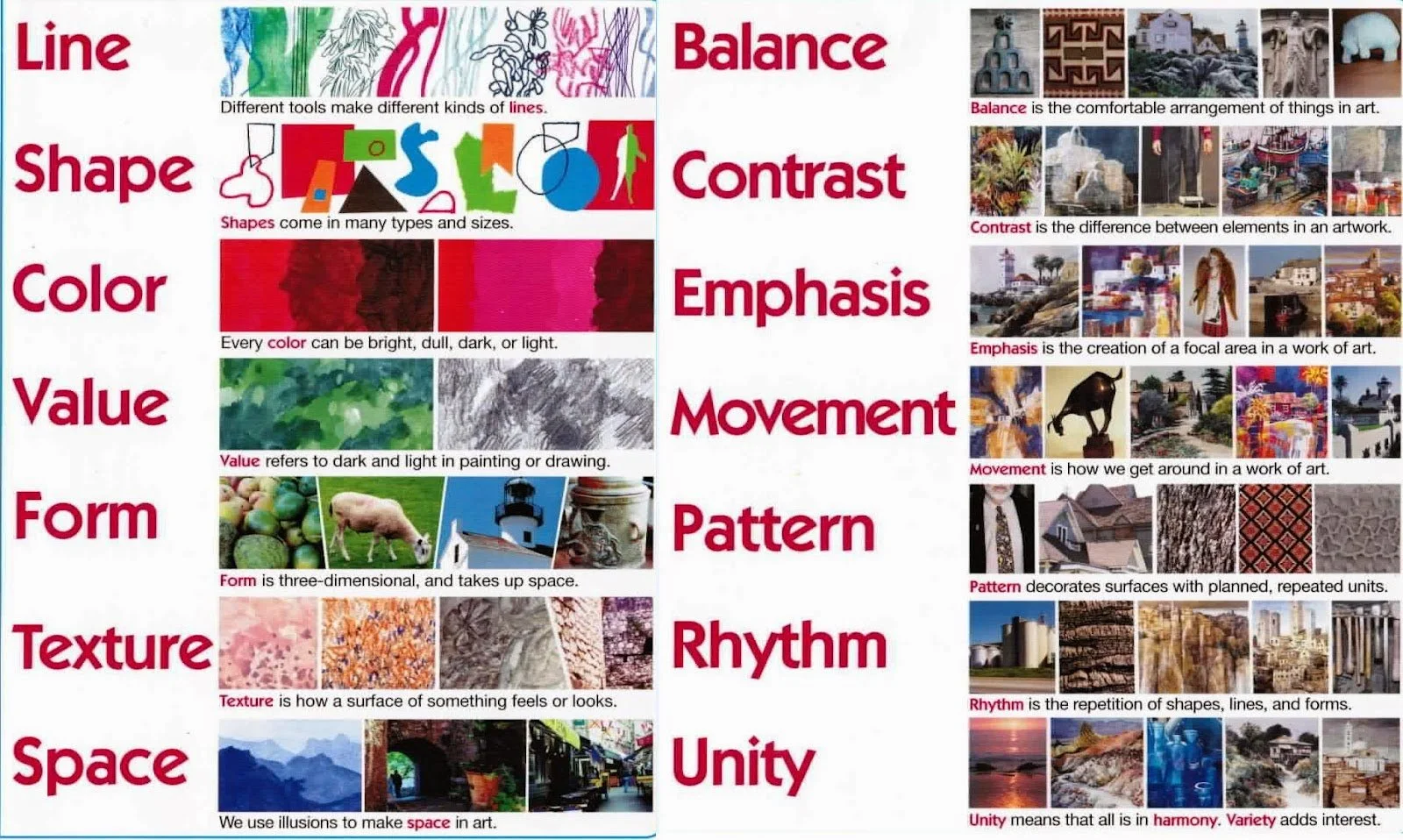Meta-Lino-Morphosis
Students will be able to orally describe and identify the process of metamorphosis through linoleum printmaking using three elements and/or principles of art.
Do Now:
5 minute drawings prompting students to morph two things together. (Days 2-17)
Agenda:
- CLO and check for understanding of CLO - students put the CLO in their own words (3 mins)
- vocab - create a GLAD chart of the words - student created definition and picture (4 mins)
-Lecture (recaps spaced accordingly)
- whole class - expectations for thumbnail sketches and steps 1-4 (5 mins)
- Studio time and one-on-one conversations (25 mins)
-Clean up (5 mins)
Exit Slip:
How is morphing two things pushing the idea of surrealism in connection to metamorphosis and the unconscious.
Practice answering questions from the pre-assessment (All informal).
STUDIO TIME
Formative Assessment: Final Four (ARTWORK) & Exhibition Text (Writing)
What is surrealism?
What is the main idea behind surrealism?
How does surrealism connect to the unconscious?
How can you define the qualities of a dreamlike art piece?
How can metamorphosis connect to surrealism?
How does your art piece connect metamorphosis to surrealism and how do we see it in the work? I collect images of my students’ final projects as well as exhibition texts..
Artist & Inspiration for this unit | Redmer Hoekstra




Grading & Process
The pre-assessment questions allow the class to discuss concepts, literacy, and global issues that are somewhat separate from visual arts. It's crucial for students to grasp the big ideas so that they can apply and transfer them to visual literature (Chen, F). For instance, students examine biology concepts like metamorphosis and surrealism as a global topic to connect with surrealism's main concepts. In this context, surrealism was renowned for depicting the imaginative realm of fantasy. Through metamorphosis, surrealism can be brought to life. As previously mentioned, comprehending this process is vital for students to create artwork that links surrealism, metamorphosis, and fantasy. The standardized rubric (above) outlines the criteria necessary for achieving a perfect score. It's worth noting that the "communication" criterion assesses how well students convey their understanding of surrealism and metamorphosis.
Under “criteria,” students are incorporating the additional part of the rubric we modified together. The requirements to achieve a point 4 on the rubric were attached in the previous screen.
I assess students using a common rubric (shared among all of my colleagues) to grade art in addition to the requirements in the rubric we modify as a class. Part two of the rubric highlights the requirements we negotiate in order for students to demonstrate mastery.
Assessing the rubric in visual art classrooms is typically straightforward. In my classroom, there is transparency between the teacher, student, and parent as each art piece is assigned. I hold high expectations for my students and always clarify the project's expected appearance, what to avoid, and how to take it to the next level. Teachers should start formulating a rubric using an average example or a 3 to promote student progress and mark those not meeting the criteria (Goodwin, B et al…). To illustrate what students should achieve, I present exemplary work from past years in addition to formatting the rubric. Moreover, I ask students to reiterate the learning objective in their words and have frequent formative assessments to gauge their comprehension.
The transition from pre-assessment to mastery involves revisiting the questions during the lecture and using exit slips to monitor progress. Furthermore, students must interpret the objective, explain how their artwork aligns with it, and meet the rubric's requirements. By providing continuous feedback, students can pinpoint areas that require improvement to attain maximum points in their formative assessments. Moreover, it is essential to recognize that students communicate an idea visually, which can be generalized to an audience. Therefore, incorporating a written exhibition text empowers students to articulate their ideas and avoid misinterpretation. This enhances their level of understanding.
Ongoing feedback is an integral part of any effective learning process, and it begins right after the pre-assessment stage. Pre-assessment is a crucial step that serves as a baseline to gauge a student's understanding of a topic before diving deeper into it (Hale, L). This assessment is not graded, but it provides valuable insights into a student's current level of knowledge, which can be referenced towards the end to measure their growth.
Aside from pre-assessment, there are various methods of maintaining ongoing feedback. Lectures accompanied by note catchers are excellent tools for ensuring students are paying attention and retaining information. Exit slips are another valuable way of measuring understanding and are usually given at the end of a lesson to gauge the key takeaways.
Discussion posts and peer critiques are also effective ways of promoting ongoing feedback. These activities allow students to engage with each other and share their perspectives, leading to constructive feedback that can help them develop and refine their understanding of the topic.
Gallery walks and written reiteration of the art piece through an exhibition text are other methods that can help provide ongoing feedback. Gallery walks are a chance for students to display their work and receive feedback from their peers, while written reiteration of the art piece through an exhibition text allows students to communicate their ideas in written form and receive feedback on their communication skills (Chen, F).
In conclusion, ongoing feedback is a crucial aspect of any successful learning process. By utilizing various methods such as pre-assessment, lectures, note catchers, exit slips, discussion posts, peer critiques, gallery walks, and exhibition texts, teachers can provide students with the support and feedback needed to help them grow and succeed in their learning journey.
Reflection:
I firmly believe that students can achieve success if they are guided by certain principles, particularly those that are embodied in the "be demanding" imperative. These principles are instrumental in guiding the incorporation of standards, expectations, objectives, and personal goals to promote student learning. In this context, I recently gave a lecture on complex concepts, with a focus on visual literacy. The aim was to help my students determine an achievable goal for mastery of the topic. To achieve this goal, I have given my students full autonomy to modify the rubric and dismantle state standards to meet their individual needs. By doing this, I have created a classroom culture that promotes a sense of community rather than dictatorial control.
To ensure that my teaching is effective, I began by conducting a pre-assessment of my students' knowledge gaps. This provided me with a starting point for designing my lectures and studio-based processes. I have also incorporated multiple checks for understanding, including informal, and spaced formative assessments. These assessments help to bridge the gap between what we already know and what we still need to learn.
My classroom practices also include various observations and individual check-ins, which allow me to measure proficiency in communication criteria marks on the rubric. As a result, I can gauge each student's progress and adjust my teaching strategies accordingly. The formative assessment includes the creation of an art piece and an exhibition text. These assessments allow me to measure each student's level of understanding in relation to their ability to articulate an idea and their skill level with a new medium.
Overall, my approach to teaching is centered on creating an environment that allows each student to take a unique journey towards a common goal. By giving them autonomy and flexibility, I empower them to achieve their full potential and experience success.
Student work is attached in the reflection tab.
References
Chen, F., & Andrade, H. (2018). The impact of criteria-referenced formative assessment on fifth-grade students’ theater arts achievement. Journal of Educational Research, 111(3), 310–319. https://doi.org/10.1080/00220671.2016.1255870
Connor Syrewicz. (2020). The Arts: A Creative Future. National Highlights Inc.
Goodwin, B, and Elizabeth Ross Hubbell. The 12 Touchstones of Good Teaching. ASCD, 2013.
Hale, L., & Adhia, D. B. (2022). The continuous feedback model: Enabling student contribution to curriculum evaluation and development. Focus on Health Professional Education (2204-7662), 23(1), 17–36. https://doi.org/10.11157/fohpe.v23i1.501
Lyon, C. J., Nabors Oláh, L., & Caroline Wylie, E. (2019). Working toward integrated practice: Understanding the interaction among formative assessment strategies. Journal of Educational Research, 112(3), 301–314. https://doi.org/10.1080/00220671.2018.1514359


